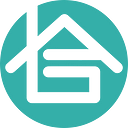Do you own an Apple product? If you do, you’ve experienced the result of UX design. UX (the UX stands for user experience) design emphasizes and supports the user through usability, usefulness, and desirability. This type of design addresses all aspects of a product through the user’s perceptions. The Harmony Plus UX Design course is for middle and high school students to learn the design skills they need for entrepreneurship. Throughout this 5-week course, students discover UX design theories, tools, and skills all while completing an industry-level project. With the guidance and mentorship of Silicon Valley designer, Donji Yamada, students also gain skills in interviewing, user testing, graphic design, and product prototype. Hillary is one Harmony Plus student who recently took part in — and loved — this comprehensive UX design course.
Hillary originally signed up for the class because she had heard good things about the course from other students. The positive reviews piqued her interest, so she attended a Zoom meeting to learn more about the course. This is where she discovered that UX design doesn’t need coding, a big plus for her. It was also in this meeting where she saw Donji’s portfolio example. The professional and sleek look of his portfolio fascinated her even more, especially since it could be used for her college and school applications as well as any jobs. As someone who wants to pursue a double major in CS (computer science), Hillary felt that taking a course like UX design would benefit her. By learning more about design and how apps are created before coding, she would set herself up for success with new skills to make her more well-rounded. Her desire to widen her knowledge and experience, combined with her overall passion for STEM and tech, drove her desire to sign up for this course.
Once in the course, Hillary felt compelled to design a mental health app. After reading an article on how people are experiencing depression during the COVID-19 pandemic due to the lack of human interaction, she was inspired. In her extremely detailed app, the user is placed into a random chat where they can talk with others to help improve their mental health. With face to face and other in-person interactions so limited right now, Hillary hoped that creating this app would help bridge the gap between people.
In building her app, Hillary learned two new skills: wireframing and Figma. Wireframing is creating a blueprint for your app. Acting as a visual guide, a wireframe is created to help arrange elements to best accomplish the app’s purpose. Figma is a cloud-based design and prototyping tool that is used for digital projects. Together, they are used to design and create apps. For Hillary, these skills were fascinating to learn since she was new to UX design and they could apply to her future career. Starting with the basic design in the wireframe and then moving to a more fleshed out design using Figma, Hillary was able to understand the entire UX design process. Another crucial skill Hillary learned in this course was interviewing. Customer interviewing is an essential part of UX design since you are designing to make the user’s life easier. These interviews help to inform any corrections that the product might need to make it better. When a designer is working that closely with a product, they might miss things or design for themselves. For Hillary, it was helpful to hear another person’s point of view on her product and gain feedback to improve her layout design.
When Hillary had finished her app for the final project, she had to receive and give critical feedback. Although Hillary was towards the end of the presentations, she recalled one piece of feedback given to her, concerning her layout (similar to what she encountered in her interviews). Since she was aware of this issue, she found critical feedback much easier to receive than give. When pressed to give feedback to her peers, she noted it was difficult but was able to give insight into their process to help them improve their project. Donij told her that critical feedback can often be hard to hear (and give), but that it is ultimately helpful in improving your product.
Part of why Hillary enjoyed the course so much was due to Donji’s innovative approach to teaching the topic. The students often received creative time to work on designing their app. And during the Figma tutorial, the pace was easy to follow along with. This was great for Hillary since Figma and wireframing were the most interesting and helpful for her and her future career. She particularly enjoyed the Figma templates, since they looked professional and helped give her app a feeling of completeness.
In this detailed course, Hillary learned everything from basic design skills to interview skills and wireframing to presenting. Even with all her newfound knowledge, her top two skills were: Learning to consider developers and Figma (of course). With the developers, she saw how important it was to consider their point of view and skills as she was designing. For example, her app had a filter and incorporated AI, so she had to consider what her developer could do. As for Figma, she loved being able to create apps and using wireframing to create prototypes. These hands-on skills will transfer easily to her CS or STEM classes in college. And just as Hillary found her strengthened her future career path and passions, your child can broaden their horizons too! The next UX design classes are:
- 3/3–3/31, Wednesdays OR 3/7–4/4, Sundays 5–7 pm
- 4/7–5/5, Wednesdays 5–7 pm
Head over to the site to sign up now!
